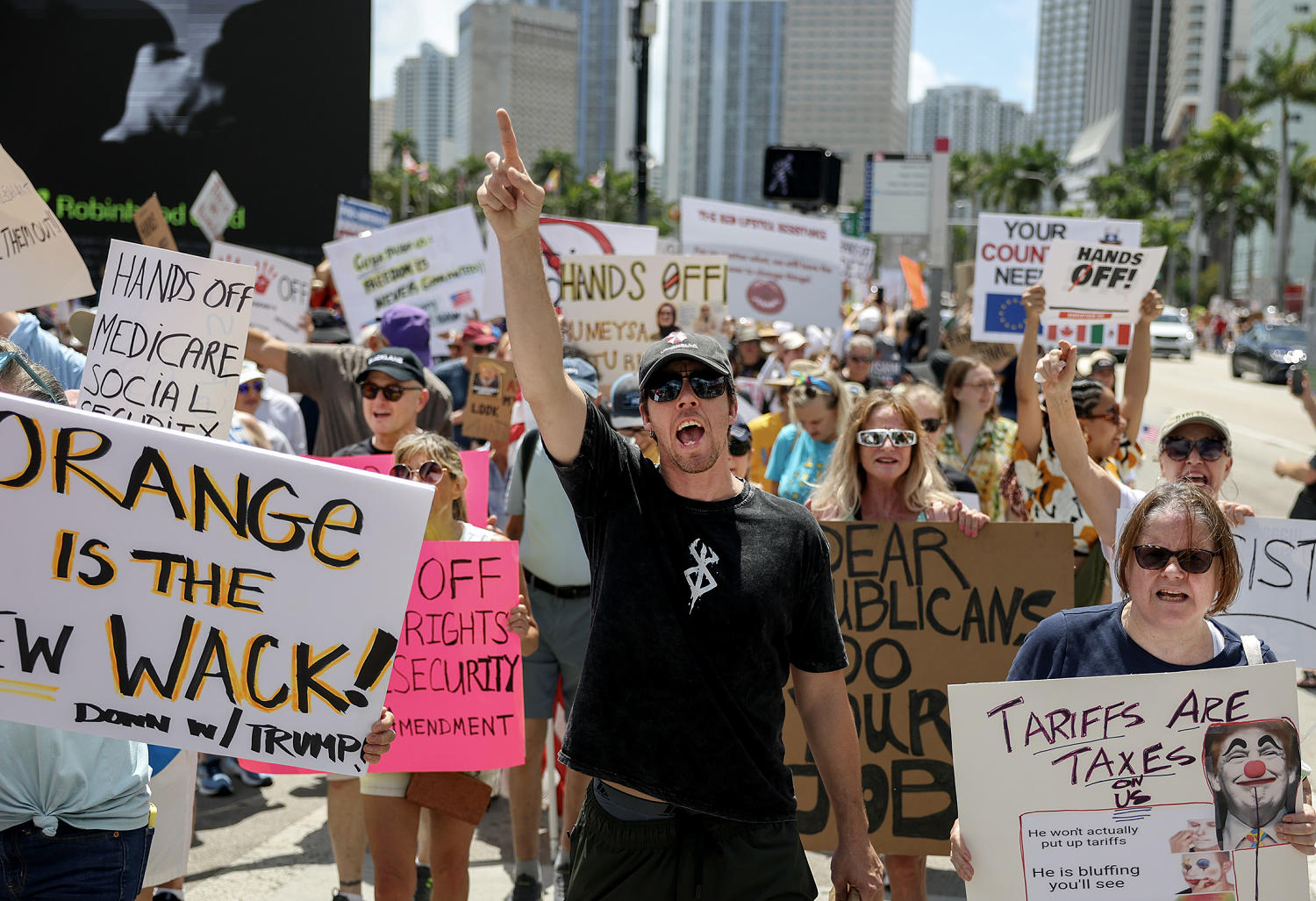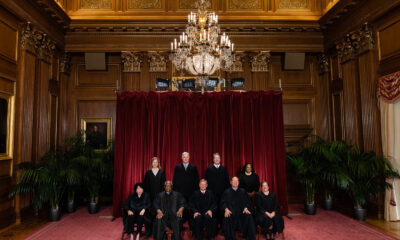The Dictatorship
Elon Musk’s X could be about to face punishment from the EU. And it’s not happy.

The New York Times reported Thursday that the European Union may soon levy penalties against Elon Musk’s social media platform, X, under an E.U. law aimed at curbing disinformation, hate speech and other harmful content.
In July, the E.U. released preliminary findings of an investigation that found X had violated the Digital Services Act. Specifically, the E.U. concluded that:
- X’s interface for so-called verified accounts was not in line with industry practice and had been abused by “malicious actors” to deceive users.
- X has created barriers that hinder transparency about advertisements, thwarting “required supervision and research into emerging risks brought about by the distribution of advertising online.”
- X doesn’t comply with the Digital Services Act’s rules around providing public data to researchers who can use it to study the spread of things like disinformation.
The New York Times, citing four people with knowledge of the E.U.’s plans who declined to be identified because of the ongoing investigation, reported that penalties are expected to be announced this summer. The report has not been independently verified by BLN or NBC News.
These days, X is a political weapon more than anything else. And Europe is right to want to regulate it.
Earlier this year, Musk seemed to demonstrate how necessary the E.U.’s precautions are when he used X to spread disinformation in hopes of swaying voters toward the far-right, Nazi-friendly Alternative for Deutschland partyor AfD, in Germany’s snap elections. The platform also has apparently quashed dissent against Turkey’s illiberal regime and promoted disinformation in support of former Brazilian President Jair Bolsonaroa far-right politician who stands accused of attempting a coup — to say nothing of the ways it’s been used to spread disinformation in the U.S.
These days, X is a political weapon more than anything else. And Europe is right to want to regulate it.
Predictably, the E.U.’s efforts to deter disinformation and hate speech have angered President Donald Trump and members of his administration, both of which are widely known to promote disinformation and hateful rhetoric online. The White House recently released a memo attacking the Digital Services Act, claiming it unfairly targets American companies and vowing that such regulations “will face scrutiny from the Administration.”
On Thursday, X’s Global Government Affairs team posted a statement saying that the platform “has gone above and beyond to comply with the EU’s Digital Services Act, and we will use every option at our disposal to defend our business, keep our users safe, and protect freedom of speech in Europe.”
That seems utterly detached from the clear dangers that Musk’s platform has posed to democracy and, frankly, public safety. But when you’re accustomed to operating free from oversight, accountability can feel like oppression.
The Dictatorship
What sets Alex Ovechkin apart from LeBron James — and Tom Brady

It’s a debate as old as organized athletic competition itself. Who is the greatest of all time? Alex Ovechkin is now making his own GOAT case in professional hockey. With his 895th career goal on Sundaythe Washington Capitals star has accomplished what was once unthinkable and surpassed “The Great One,” Wayne Gretzky, as the all-time leading goal scorer in NHL history.
When Gretzky hung up his skates after his 1998-99 season with the New York Rangers, nobody could have imagined his record being broken. Now, after watching Ovechkin’s historic season, I can’t help but wonder if this will be the last “unattainable” record to fall in my lifetime.
When Gretzky hung up his skates after his 1998-99 season with the New York Rangers, nobody could have imagined his record being broken.
In baseball, it’s Barry Bonds’ 762 career home runs. For those denouncing PEDs, it’s Hank Aaron’s 755 home runs. In basketball, it’s LeBron James’ all-time career points total (which is increasing as we speak). In football, it’s Tom Brady’s 649 career passing touchdowns and 89,214 passing yards.
But I think there’s something about Ovechkin’s record that puts it in a special category as far as individual records are considered.
Bonds’ steroid use will forever place an asterisk next to his statistics in record books. While Brady is widely considered the football GOAT, the NFL’s offensive-minded era of football has certainly helped. James is somehow still dominating games 20 years into a surefire spot on the Mount Rushmore of the game. But like Brady, I’d argue the league he plays in now is a physically softer one. If you simply breathe on a quarterback in the wrong way, you can draw a flag. Heck, the league made a rule banning lunging for a quarterback’s legs while on the ground — a rule widely believed to be the result of Brady tearing his ACL in 2008.
Ovechkin, on the other hand, is playing in an era when goal-scoring is down compared with Gretzky’s generation. Goalies also had far smaller pads in the ’80s and ’90s than the goalies of today. Anecdotally, you can also argue the league has far more parity today than a few decades ago, with talent widely dispersed around the league. Gretzky played alongside a series of Hall of Famers for years, forcing opponents to split their focus. Ovechkin is generally the main target of defenses.
None of this is to say that Gretzky isn’t the greatest hockey player to ever lace up ice skates. His ability to distribute the puck shows in his insane career points total. And keep in mind that Gretzky still has more career assists than any other player has total points for his career. He’s more than 1,200 points clear of the second-best player. But if we’re just looking at goals scored, Ovechkin seems to have broken the record fair and square — including in the same number of games that it took Gretzky to set the benchmark.
Ovechkin is 39 years old. He has one year remaining on his current, and most likely final, contract in the league. That means he could realistically push his all-time total to around 950 goals. He’s already won a Stanley Cup for his championship-starved franchise. And even without another year, it’s likely his goal record may never be broken. In fact, if the Capitals win it all this year, I wouldn’t be surprised it Ovechkin retired at the end the season.
Few athletes get to walk off the stage at the very pinnacle of their careers. A broken-down Peyton Manning won a Super Bowl with the Denver Broncos before retiring, David Robinson exited stage left after winning a title with the San Antonio Spurs in 2003, and Jerome Bettis ran off the field for the final time after a 2006 Super Bowl. What could be better than breaking the unbreakable record, winning a Stanley Cup and riding off into the sunset? For Ovechkin, it would be a final hat trick in a career filled with them.
Jason Page is the host of the nationally syndicated daily TV show “SportsWrap w/Jason Page.”
The Dictatorship
Supreme Court splits 5-4 to grant Trump emergency relief in Alien Enemies Act deportation litigation

A divided Supreme Court vacated temporary restraining orders issued by a federal judge in Washington, D.C., that had halted certain deportations under the Alien Enemies Act. The court split 5-4, with Republican appointees in the majority and Trump appointee Amy Coney Barrett dissenting alongside the court’s three Democratic appointees.
The majority framed the matter as a mere procedural disagreement, but dissenting justices cited loftier issues at play, with Justice Sonia Sotomayor highlighting potential “life or death consequences.”
In an unsigned “per curiam” ruling for the court, the majority said detainees must bring their challenges in habeas corpus proceedings and must do so where they are confined. “The detainees are confined in Texas, so venue is improper in the District of Columbia,” the majority said.
The majority also said detainees under the act “must receive notice after the date of this order that they are subject to removal under the Act. The notice must be afforded within a reasonable time and in such a manner as will allow them to actually seek habeas relief in the proper venue before such removal occurs.” The majority emphasized that it wasn’t ruling on the government’s interpretation of the act itself.
The American Civil Liberties Union’s Lee Gelernt, who was counsel of record at the Supreme Court for the plaintiffs who brought the case, emphasized the due process aspect of the ruling. “The critical point of this ruling is that the Supreme Court said individuals must be given due process to challenge their removal under the Alien Enemies Act. That is an important victory,” he said.
Writing a dissent joined by the two other Democratic appointees and partly by Barrett, Sotomayor called the majority’s legal conclusion “suspect.” She said the court granted the government “extraordinary relief” without mentioning “the grave harm Plaintiffs will face if they are erroneously removed to El Salvador or regard for the Government’s attempts to subvert the judicial process throughout this litigation.”
The majority chided the dissenters’ “rhetoric” and said it agrees the detainees are entitled to notice and an opportunity to challenge their removal and that “the only question is which court will resolve that challenge.” Similarly, Justice Brett Kavanaugh (who was in the majority) added a concurring opinion to emphasize that “all nine Members of the Court agree that judicial review is available. The only question is where that judicial review should occur.”
But on the prospect of life-or-death stakes, Sotomayor wrote, “Individuals who are unable to secure counsel, or who cannot timely appeal an adverse judgment rendered by a habeas court, face the prospect of removal directly into the perilous conditions of El Salvador’s CECOT, where detainees suffer egregious human rights abuses.” She raised the concern of people being mistakenly deported and then the government not trying to get them back, which is at issue in another case pending before the justices.
Justice Ketanji Brown Jackson added her own dissent to lament the majority’s actions in the case, in which, as she put it, President Donald Trump “has invoked a centuries-old wartime statute to whisk people away to a notoriously brutal, foreign-run prison. For lovers of liberty, this should be quite concerning.”
The Trump administration sought high court intervention in litigation over the 1798 law, which Trump invoked to summarily deport alleged Venezuelan gang members on flights to El Salvador. The law has been invoked just three previous times in the nation’s history, all during declared wars.
On March 15, U.S. District Judge James Boasberg issued temporary restraining orders to halt certain deportations under the act pending further litigation. A divided federal appellate panel in Washington, D.C., declined to halt Boasberg’s orders, and the government appealed to the justices.
“This case presents fundamental questions about who decides how to conduct sensitive national-security-related operations in this country — the President, through Article II, or the Judiciary, through TROs,” the administration wrote, referring to temporary restraining orders. “The Constitution supplies a clear answer: the President. The republic cannot afford a different choice,” it said in the March 28 application to Chief Justice John Robertswho handles emergency litigation from Washington, D.C.
Opposing the government’s application, the plaintiffs who brought the lawsuit argued that the administration isn’t entitled to emergency relief.
Opposing the government’s application, the plaintiffs who brought the lawsuit argued that the administration isn’t entitled to emergency relief. They noted that the government can still remove people under other legal authorities besides the Alien Enemies Act. And they said that without Boasberg’s temporary orders in place, the plaintiffs “will suffer extraordinary and irreparable harms — being sent out of the United States to a notorious Salvadoran prison, where they will remain incommunicado, potentially for the rest of their lives, without having had any opportunity to contest their designation as gang members.”
Boasberg has separately been examining whether Trump officials violated his orders. The government has questioned the Obama-appointed judge’s authority and has maintained that it technically didn’t violate his orders in any event. But the plaintiffs said officials clearly violated his orders when they didn’t even attempt to return individuals on planes, despite Boasberg’s unambiguous directive to do so and having the ability to do so. The judge is poised to rule on the matter in the coming days after a hearing last week at which he had a hard time getting answers from the government about its compliance with his orders.
The government’s citation of national security concerns comes amid the “Signalgate” scandal, in which top officials mistakenly disclosed sensitive military informationas well as the government’s admission in another case that it made an “administrative error” in removing an individual to a Salvadoran prison who wasn’t supposed to be sent there, which Sotomayor cited in her dissent.
Subscribe to theDeadline: Legal Newsletterfor expert analysis on the top legal stories of the week, including updates from the Supreme Court and developments in the Trump administration’s legal cases.
Jordan Rubin is the Deadline: Legal Blog writer. He was a prosecutor for the New York County District Attorney’s Office in Manhattan and is the author of “Bizarro,” a book about the secret war on synthetic drugs. Before he joined BLN, he was a legal reporter for Bloomberg Law.
The Dictatorship
What this weekend’s massive ‘Hands Off!’ protests mean for the left

The day after President Donald Trump was sworn into office for his first term, he was met with the largest single-day protest in American history. But the second time around, the protests surrounding Trump’s inauguration were comparably muted — they were a fraction of the sizeand generated far less impact than the first round. The disparity seemed to capture the demoralized, depleted mood among Americans who opposed Trump and stared slack-jawed as he won the popular vote upon his third attempt at the White House.
Yet on Saturday, mass protests swept the nationand it could mean that dissenting Americans are finding their voices again. At a time when Trump is moving aggressively to crack down on intellectual and political dissent at universities, last weekend’s protests represented a massive rebuke of the Trump administration — and suggested the left is regaining its footing, as it figures out how to fight back.
Registering dissent is an important democratic exercise.
Saturday’s “Hands Off!” rallies were backed by a large coalition of organizations that included civil rights groups, labor unions, climate groups, progressive activist outfits and left-wing groups like the Democratic Socialists of America. The organizers put forth three demands: “an end to the billionaire takeover and rampant corruption of the Trump administration”; “an end to slashing federal funds for Medicaid, Social Security, and other programs working people rely on”; and “an end to the attacks on immigrants, trans people, and other communities.”
The turnout was big: Over 1,000 “Hands Off” protests were planned across all 50 states, and organizers said turnout far exceeded the turnout of 500,000 RSVPs. There aren’t any independent estimates of national turnout, but dense, large crowds made their presence known in many cities. Per The New York Times:
On Fifth Avenue in Manhattan, the protest stretched for nearly 20 blocks. In Chicago, thousands flooded Daley Plaza and adjacent streets, while, in the nation’s capital, tens of thousands surrounded the Washington Monument. In Atlanta, the police estimated the crowd marching to the gold-domed statehouse at over 20,000.
In addition to the crowds of thousands — or tens of thousands — who showed up in cities and towns across the nation, protests also took place abroad in cities including London, Paris and Berlin.
Like all mass protests, the messages conveyed at these ones were diverse and sprawled beyond the overarching themes of the organizers. Protest signs expressed concern about free speech at a time when Trump is trying to quash it by bullying universities and attempting to deport legal immigrants who express pro-Palestinian speech. There were objections to Trump’s global economy-destabilizing tariff regime. In Washington, D.C., a rally for Gaza, in which protesters marched to the Immigration and Customs Enforcement headquarters, took place adjacent to the main “Hands Off” rally. And a lot of signs framed Trump and billionaire Elon Musk as posing a fascist threat to the country.

The broad scope of the protests mirrors the broad scope of Trump’s assault on our republic — and underscores how big of a tent the anti-Trump coalition is going to need to be to effectively resist Trump’s dismantling of the administrative state, social services and democratic institutions.
To be sure, though it’s been on a smaller scale and less noticed, there actually has been a lot of protest activity in the first few months of Trump’s second administration. Indivisible, a liberal grassroots network, was effective in encouraging outraged citizens to go to town halls to make noise and hold Republicans accountable — so much so that the National Republican Congressional Committee advised GOP lawmakers to stop attending town halls rather than face their constituents’ wrath. Musk’s Tesla has been the object of boycotts and protests that appear to be hurting its bottom line. Anti-DOGE protests have taken place across the country for months. And while the Democratic Party leadership has largely shown itself to be feckless and is increasingly losing the trust of its membersSen. Bernie Sanders, I-Vt., has been drawing huge crowds in swing states across the U.S. with his “Fighting Oligarchy” Tour.

It can be easy to overestimate the significance of a single protest, even a huge one. One-off protests can be forgotten rather quickly in an era where the news cycle moves at an unfathomable speed. And it’s relatively easy to get people to object to something; it’s far harder to get them to organize around a widely desired alternative.
Still, registering dissent is an important democratic exercise, and reports of older first-time protesters coming out to say “no” to Trump are positive signs. As the republic teeters on the edge of myriad crises, the left is exhausted and afraid. But on Saturday it reminded us it’s still here, and it’s not going to go quietly into the night.
Zeeshan Aleem is a writer and editor for BLN Daily. Previously, he worked at Vox, HuffPost and Blue Light News, and he has also been published in, among other places, The New York Times, The Atlantic, The Nation, and The Intercept. You can sign up for his free politics newsletter here.
-

 The Josh Fourrier Show5 months ago
The Josh Fourrier Show5 months agoDOOMSDAY: Trump won, now what?
-
Uncategorized5 months ago
Bob Good to step down as Freedom Caucus chair this week
-
Uncategorized5 months ago
Johnson plans to bring House GOP short-term spending measure to House floor Wednesday
-

 Politics5 months ago
Politics5 months agoWhat 7 political experts will be watching at Tuesday’s debate
-
Economy5 months ago
Fed moves to protect weakening job market with bold rate cut
-
Economy5 months ago
It’s still the economy: What TV ads tell us about each campaign’s closing message
-

 Politics5 months ago
Politics5 months agoHow Republicans could foil Harris’ Supreme Court plans if she’s elected
-

 Politics5 months ago
Politics5 months agoRFK Jr.’s bid to take himself off swing state ballots may scramble mail-in voting











